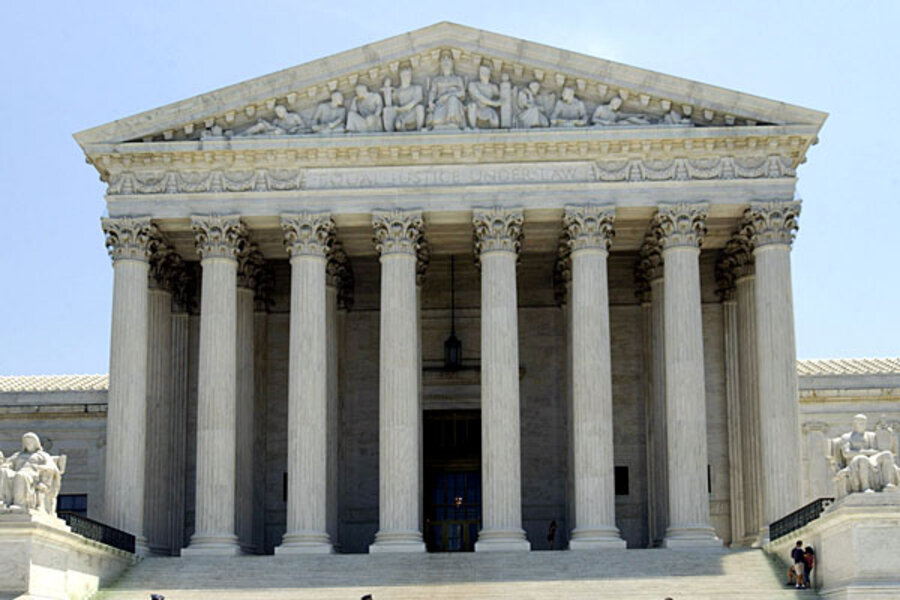Supreme Court justices face tangled mess with Texas redistricting plan
Loading...
| Washington
The Supreme Court struggled Monday to find a compromise solution to a legal dispute that has ensnared Texas in a prickly battle over newly-drawn election districts amid allegations that Latino political power is being intentionally diluted.
The justices agreed to hear the case last month on an expedited basis amid fast-approaching deadlines for the Texas primary on April 3.
The dispute arises in the context of two pending legal challenges to redrawn election districts passed by the Republican-controlled Legislature in Austin. The new maps set the boundaries for the new districts in which candidates are seeking election to the Texas House, Texas Senate, and US Congress.
Because Texas has a history of discrimination in voting, the state must submit its new election maps to a three-judge federal court panel in Washington for approval before they can be used in an election. That panel is set to take up the issue on Jan. 17.
But in addition to that legal hurdle, the state is also defending a lawsuit by minority groups and candidates before a three-judge federal court panel in San Antonio. That suit challenges the state’s new redistricting plans because they allegedly discriminate against minority voters and candidates.
It is the combination of these two legal hurdles – the requirement for pre-approval in Washington and the civil rights lawsuit in San Antonio – that set the stage for the arguments Monday at the high court.
At the heart of the dispute before the court is a decision by two of the three San Antonio judges to draw up their own election maps in place of those enacted by the Texas Legislature. Texas is challenging the judge-drawn maps.
Arguing for Texas, Washington lawyer Paul Clement told the justices that the San Antonio judges exceeded their judicial authority when they took it upon themselves to draft their own election maps to be used on an interim basis in lieu of the state’s plan.
“This court from the very beginning of its reapportionment cases has emphasized the need to look for legislative guidance [when judges draft interim maps],” Mr. Clement said.
Jose Garza, a San Antonio lawyer for the groups challenging the Legislature’s maps, countered that the Voting Rights Act requires judges not to rely on new redistricting plans until they have been approved in Washington.
Since the Texas plan has not yet been approved, he said, the judges were required to use a different baseline to fashion remedial maps that would allow elections to proceed on schedule.
“The district court in Texas was not free to incorporate discriminatory districts in its interim plan, and it didn't,” Mr. Garza said.
“I believe the plan drawn by the court is fair,” he said.
Based on their questions during the argument session, several justices disagree with Garza on that point.
“Texas is at a tremendous disadvantage here,” Justice Anthony Kennedy observed.
No clear solution emerged during the argument session.
Justice Samuel Alito suggested that perhaps Texas should delay its primary election until after the Washington panel had ruled on the pre-approval issue.
“Are there insuperable problems with postponing the Texas primary so that the plan that is to be used doesn’t have to be formulated until after the district court in Washington has ruled?” Justice Alito asked.
“Why can’t all this be pushed back?” he said. “Wouldn’t that eliminate a lot of the problems that we are grappling with in this case?”
Clement proposed a different solution. He suggested that the San Antonio judges should have used the enacted Texas plan as the baseline for its remedial maps, rather than jettisoning policy decisions made by elected lawmakers.
He said the justices should require a showing of a substantial likelihood of discrimination before federal judges disqualify any portion of the state’s maps. But short of such a showing, he said, federal judges should rely on the enacted maps.
Garza disagreed. He told the justices that the voting rights laws require judges to avoid any reliance on redistricting plans that have not yet been approved in Washington. Following the Clement suggestion would turn the pre-approval requirement on its head, he said.
The case is Perry v. Perez (11-713), (11-714), and (11-715). Given the expedited nature of the case and Texas’ approaching April 3 primary, a decision in the case is expected soon.





